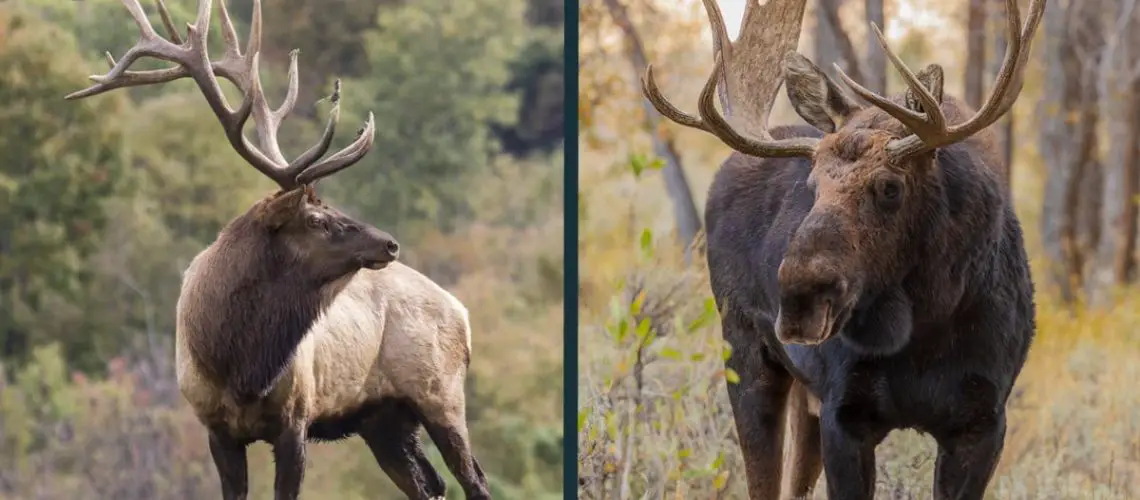
Elk vs Moose Comparison (what are the differences?) World Deer
9. Dietarily, both moose and elk are herbivores. Moose primarily feed on aquatic vegetation, shrubs, and young trees. Elk, however, primarily graze on grasses, but they also consume shrubs and trees. Their feeding habits can vary based on the season and the availability of food. Fiza Rafique.

Elk Vs Moose How To Tell, Differences, A Quick Guide
Main Differences between Elk and Moose Elk is comparatively smaller while moose is comparatively larger in body size. The neck of the elk is dark brown than the rest of the body while the moose has the same color on the neck and the rest parts of the body. Elk has a slender and pointed snout while moose has a large and bulbous snout.
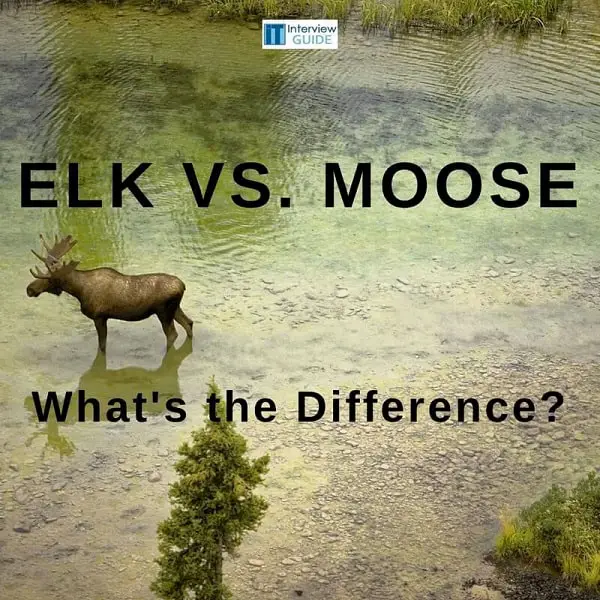
Elk vs. Moose Is There a Difference? IT Interview Guide
Elk vs Moose - The main difference between them lies in their physical appearance, size, and habitat preferences. Moose are the largest members of the deer family and have distinctive bulbous noses and broad, flat antlers. Elk are smaller, with a more streamlined face and large, branching antlers. Moose prefer wetlands, swamps, and boreal.
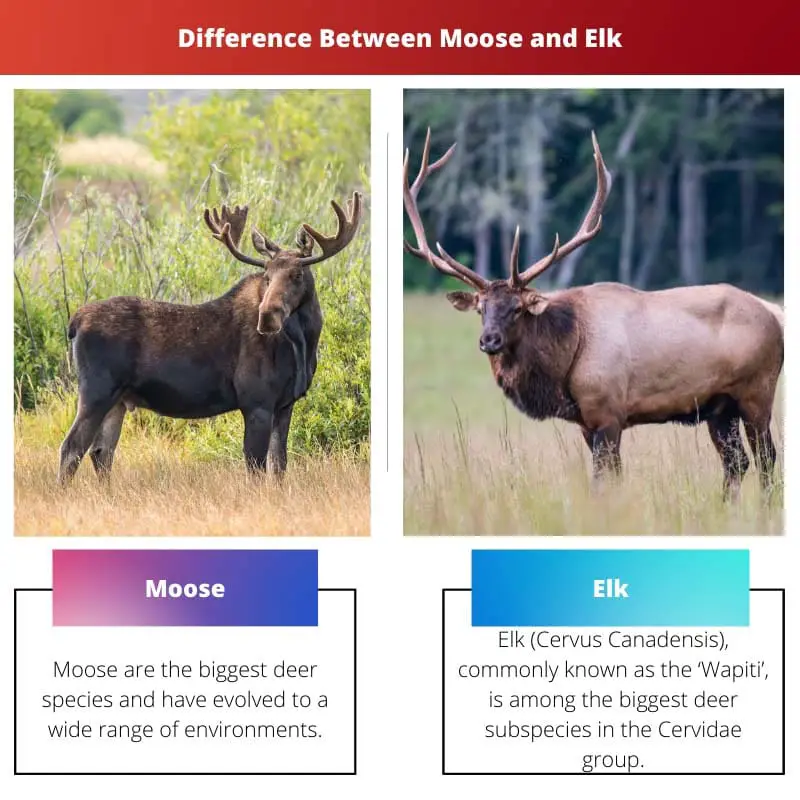
Moose vs Elk Difference and Comparison
Size: Moose has a height of 4 to 5 feet at the shoulder and weigh between 485 to 730 pounds, while Elk have a height of 5 to 7 feet at the shoulder and weigh 840 to 1,550 pounds. Habitat: Moose occupy forests, forest edges, and meadows, while Elk are commonly found near rivers and lakes with abundant aquatic vegetation.
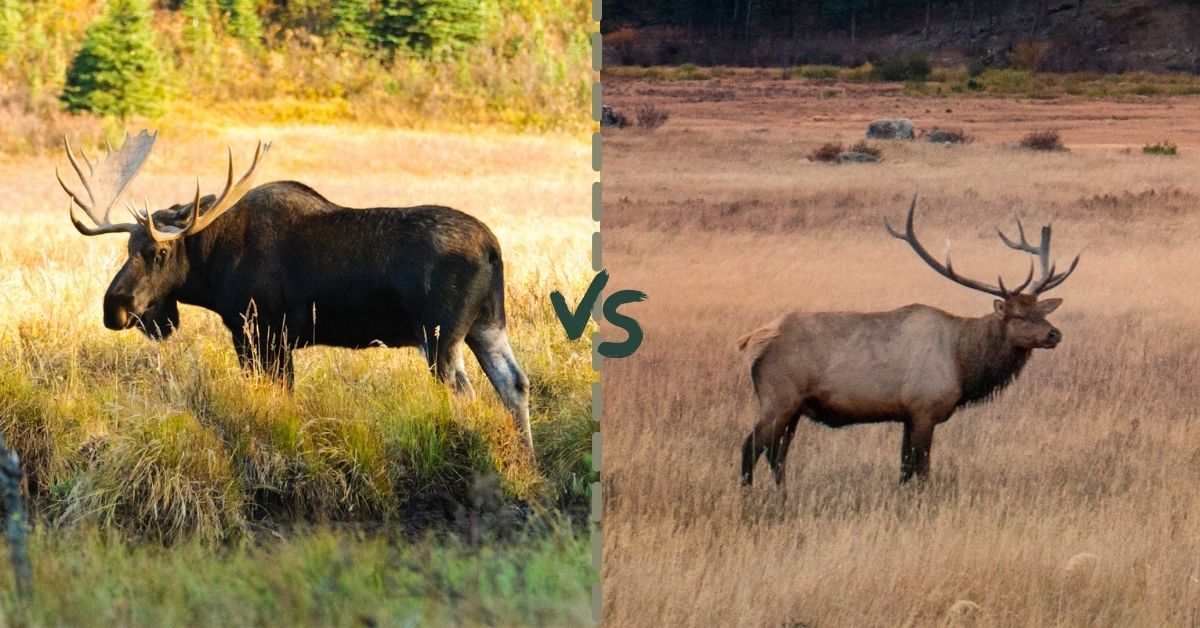
Are Moose and Elk the Same?
Females or cows are slightly smaller but still exhibit considerable strength and grace. One notable feature that differentiates elk from other deer species is their antlers. Elk possess large antlers and branching with multiple tines or points extending outwards from a central beam.
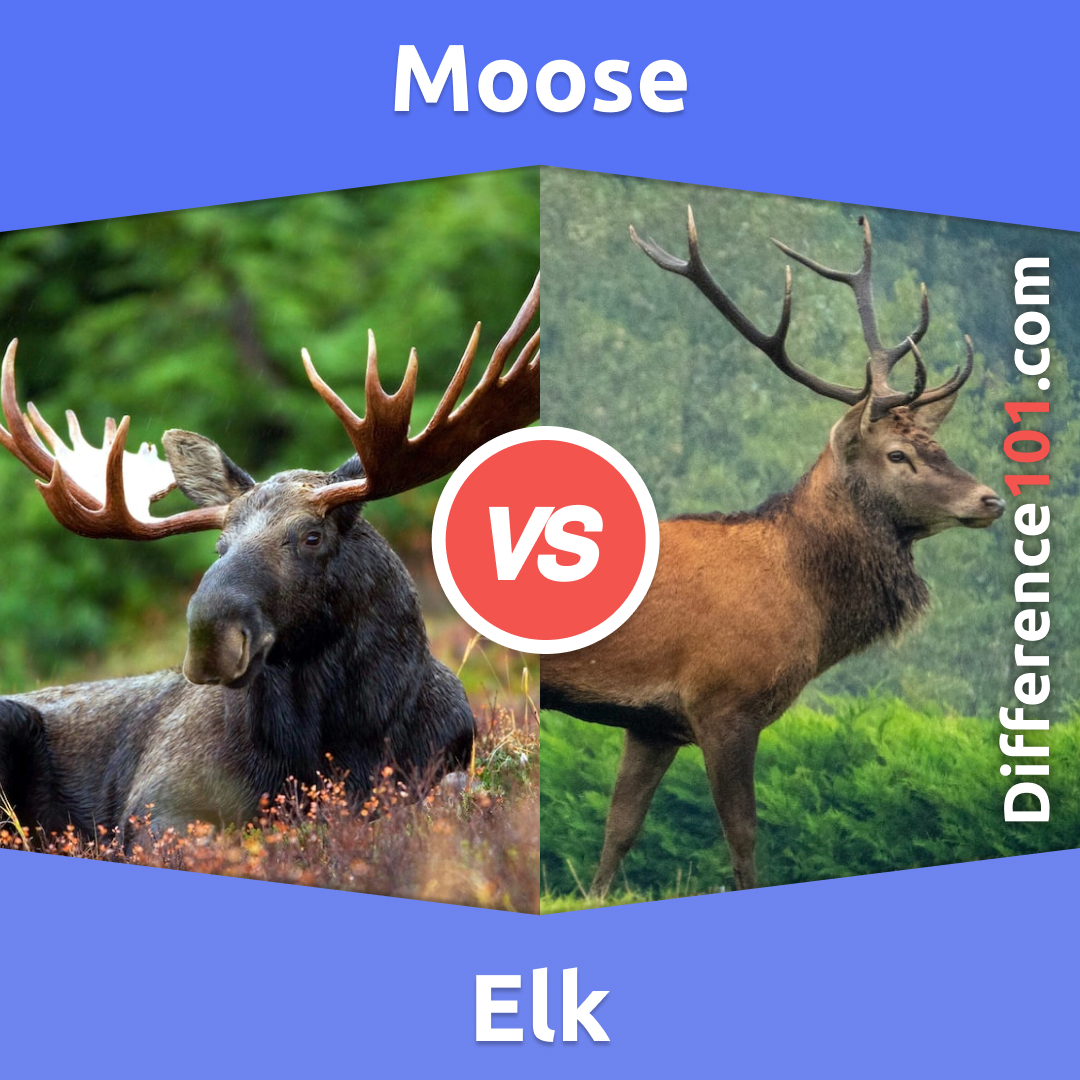
Moose vs. Elk 5 Key Differences, Pros & Cons, Similarities
Quick View A Table for Reindeer VS Deer VS Moose VS Elk The Unique Characteristics Of Reindeer Reindeer: Arctic Marvels And Christmas Icons Overview Of Reindeer As A Species Distinctive Features And Adaptations Of Reindeer Natural Habitat And Geographical Distribution Of Reindeer Role Of Reindeer In Indigenous Cultures

Elk vs Moose Key Differences, Size Comparison, and Habitat
- World Deer Elk vs Moose Comparison The moose and the North American elk (Wapiti) have similarities. After all, they're both large Cervids. Yet there are many differences between these two animals. We will discuss the differences between North American elk and moose.
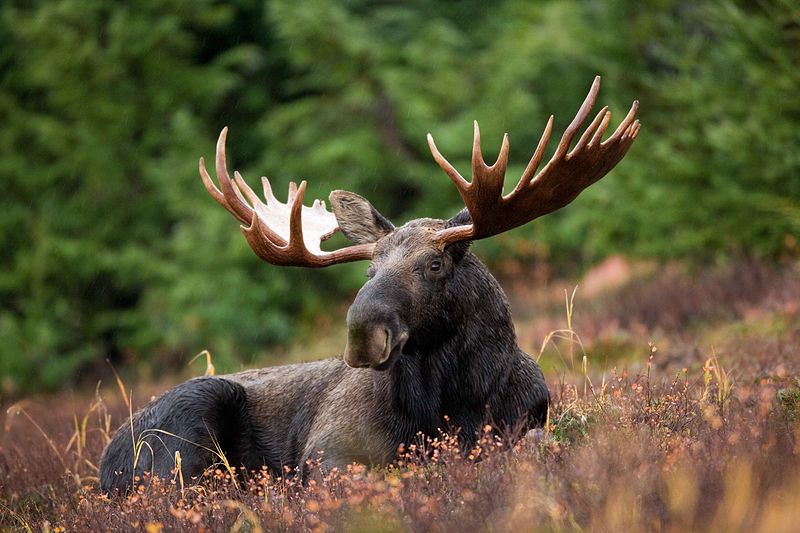
Difference Between Elk and Moose
Elks generally pack in herds. This is one of the easiest techniques in differentiating the two. 1.Moose are the largest and the more popular members of the deer family. The elk only places second. 2.Elks have smaller footprints compared to the moose. 3.Elks have blunt hoof tips while moose have pointier ones.

Is an Elk and a Moose The Same? Difference Between Moose and Elk YouTube
Group of Elk Elk and moose have similar tracks, but moose have a more hearted-shaped hooves and elk have a more tooth-shaped track. Furthermore, because moose are heavier, their prints are deeper. The noses of both moose and elk are different as well…moose are more rounded, elk are have more pointed noses.

Elk vs Moose Which Is Bigger, How Can You Tell a Difference?
2 Definitions 3 Comparison Summary Table Definitions A moose The moose is the largest deer species in the world. It can easily be identified by its flat, wide antlers and bulky face. Moose can be found in Canada, Alaska, across parts of the lower 48 in the US, and in the coldest regions in Europe.

14 Structural Difference Between Elk and Moose with Similarities
All Animals Mammals Moose Moose vs Elk: 5 Key Differences Explained Advertisement Moose and elk are both large mammals from the deer family. Given how similar they are it's really easy for the two to be confused, and more often than not it's moose that are mistaken for elk.

Elk vs Moose What's the Difference Animascorp
Moose have large and flat antlers that can span 6ft between the tips whereas, elk have elongated and branched antlers. Also, moose are generally larger than elks. Moose are larger than elks. The adult moose can grow up to 6.5ft tall (from hooves to shoulders) while weighing more than 300kg. Elks are usually 5ft tall and weigh less than 300kg.

The Difference between Moose and Elk Bear Witness Safari Tours
A moose's antlers are more rounded and flat than that of an elk. Further, moose are simply massive. Some weigh up to 1,500 pounds and can stand up to seven feet at the shoulder. They're also known to be much more aggressive in temperament than elk, though they're mostly peaceful if left alone.
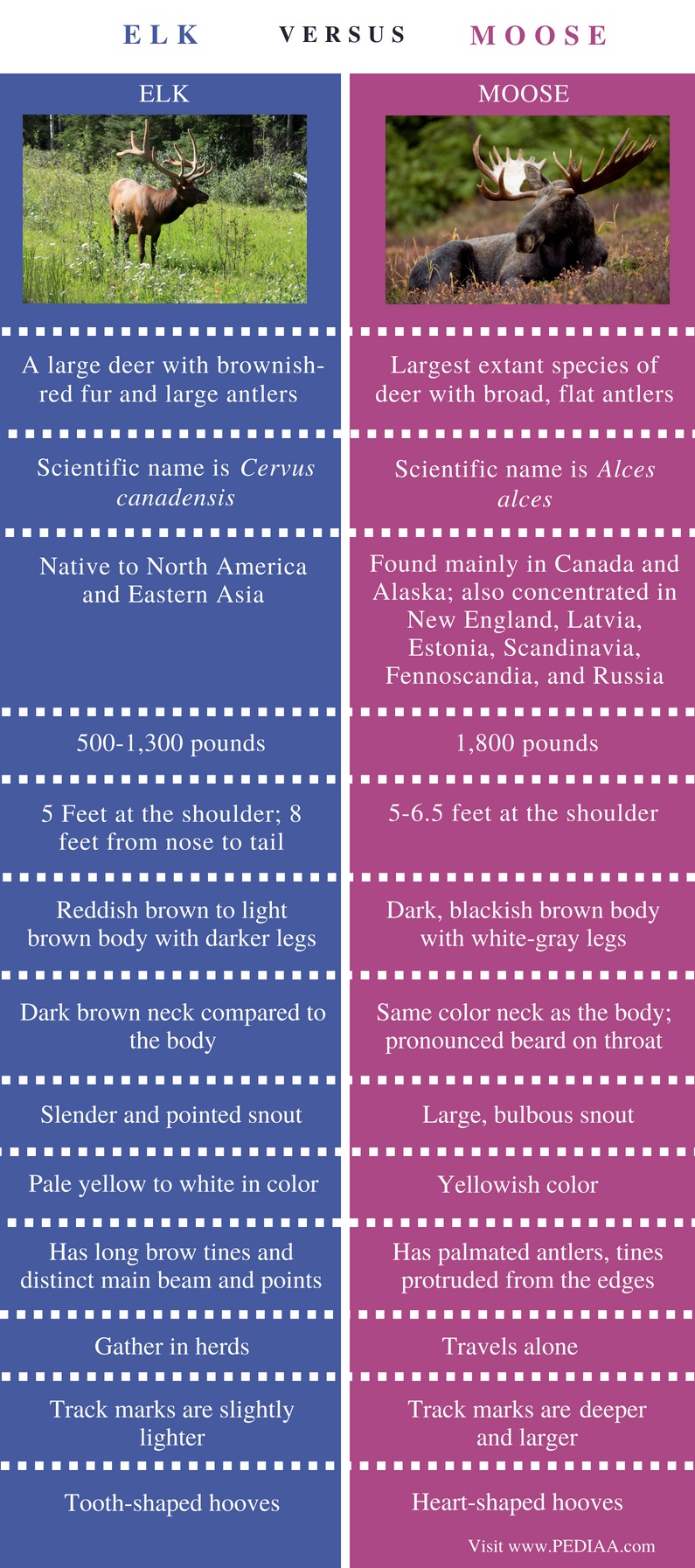
Difference Between Elk and Moose
Moose are significantly larger than elk, typically weighing up to 1800 pounds compared to elk who weigh up to 700 pounds. Moose also have a much broader body, with a longer and wider head, larger snout and a concave-shaped face. Additionally, moose have a characteristic flap of skin, known as a bell, that hangs from their neck.
Elk vs Moose, Differences, How to Tell, a Quick Guide
One of the most noticeable differences between elk and moose is their size; elk are significantly smaller than moose, weighing around 450-700 pounds, while moose can weigh upwards of 1500 pounds. Moose are the largest member of the deer family, while elk are more closely related to goats and sheep.

14 Structural Difference Between Elk and Moose with Similarities
Moose have a bulbous nose with skin hanging from the chin while elk have a thin snout. Elk likes to stay in herds while moose prefer staying alone. Moose are good swimmers and can stay underwater for up to 30 seconds while elk can't. Heroic! Amazingly, elk can run faster than moose but moose is not slow either.